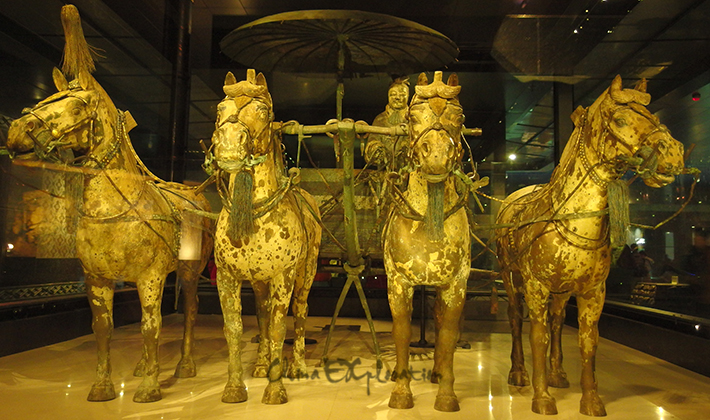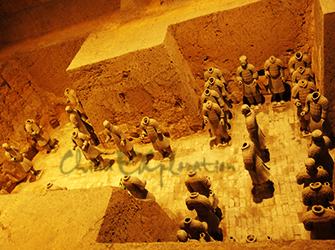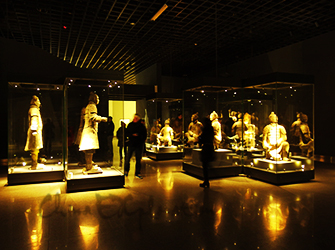It is overland tour to Mt. Wudangshan in Hubei province from Xian. Hubei province is located in mid China connecting many provinces in China by convenient transportation of railway, cruise, and flights......


A. Brief Introduction
 The Qinshihuang Mausoleum and the Pits containing terracotta warriors and horses are located in Lintong County, near Xi'an City, capital of Shaanxi Province. Constructed from 246 BC to 208 BC, the mausoleum was the first of its kind in Chinese history. With a height of 76 m, the mausoleum is laid out in line with the dimensions of Xianyang, the capital of the Qin Dynasty. It is composed of the inner compound and the outer compound, which have perimeters of 2.5 km and 6.3 km, respectively. The tomb is located in the southwest of the inner compound.
The Qinshihuang Mausoleum and the Pits containing terracotta warriors and horses are located in Lintong County, near Xi'an City, capital of Shaanxi Province. Constructed from 246 BC to 208 BC, the mausoleum was the first of its kind in Chinese history. With a height of 76 m, the mausoleum is laid out in line with the dimensions of Xianyang, the capital of the Qin Dynasty. It is composed of the inner compound and the outer compound, which have perimeters of 2.5 km and 6.3 km, respectively. The tomb is located in the southwest of the inner compound. The Qinshihuang Mausoleum is one of the world's largest imperial mausoleums. Although the actual tomb chamber has not been excavated yet, probes have determined that it is a luxurious underground palace with a unique structure and abundant funeral objects.
The Qinshihuang Mausoleum is one of the world's largest imperial mausoleums. Although the actual tomb chamber has not been excavated yet, probes have determined that it is a luxurious underground palace with a unique structure and abundant funeral objects.






It is overland tour to Mt. Wudangshan in Hubei province from Xian. Hubei province is located in mid China connecting many provinces in China by convenient transportation of railway, cruise, and flights......

One day classic tours of Chengdu to Mt. Qingchengshan and Dujiangyan Dam will show tourist the profound of ancient Chinese wisdom and culture in harmony relation with the world. ......

The most classic one day Chengdu tours will bring tourist to Chengdu Giant panda garden and Leshan giant buddha with private travel guide and car in Chengdu, extremely convenient and easy!......

One days best Chengdu tours bring tourist to Sanxingdui museum and giant panda garden with private guide and car, making your tour in Chengdu easy. ......
This panda volunteer work provide tourist with one days unique experience of Panda volunteer project works and bring them an intimate touch with Giant pandas, also the best way to learn deep about pand......

It is tour from the only one operator in Chengdu tours market offering Emeishan and Leshan tours by bullet train. Our highlights including Leshan Giant Buddha and Mt Emeishan. ......

